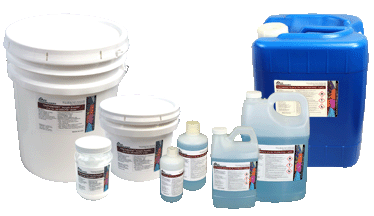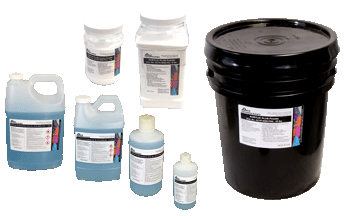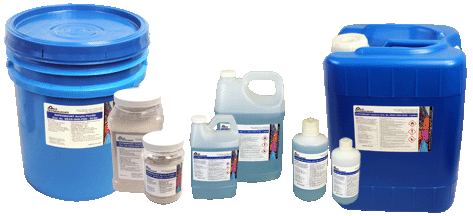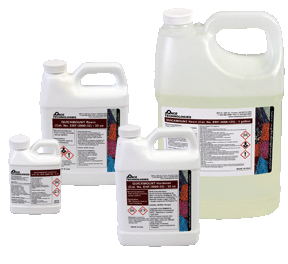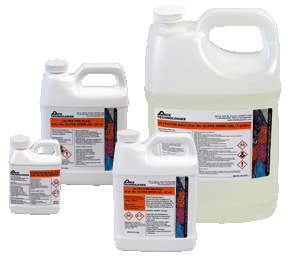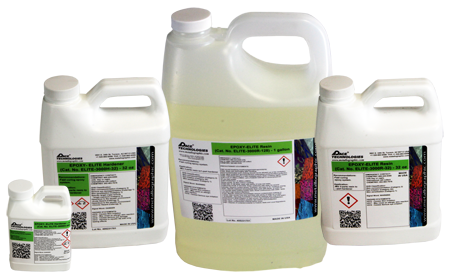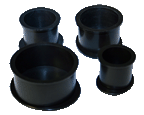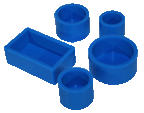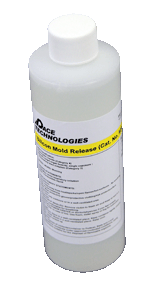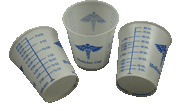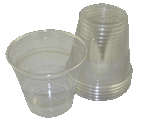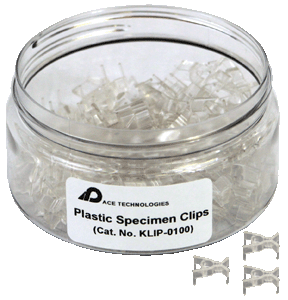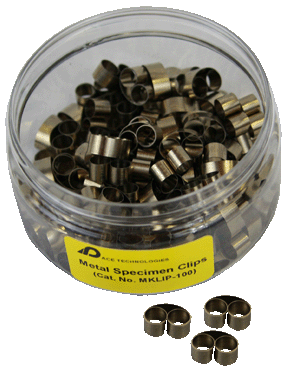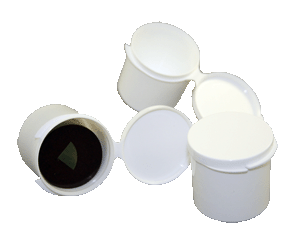


Metallographic Castable Mounting Information
Metallographic Specimen Mounting
The primary reasons for specimen mounting are to better hold the part to be ground and polished, and to provide protection to the edges of the specimen. Secondarily, mounted specimens are easier to fixture into automated machines or to hold manually. The orientation of the specimen can also be more easily controlled by fixturing it and then setting it in place via mounting. Metallographic mounting is accomplished by casting the specimen into a castable plastic material or by compression mounting the plastic under pressure and temperature.

Castable Resin Properties
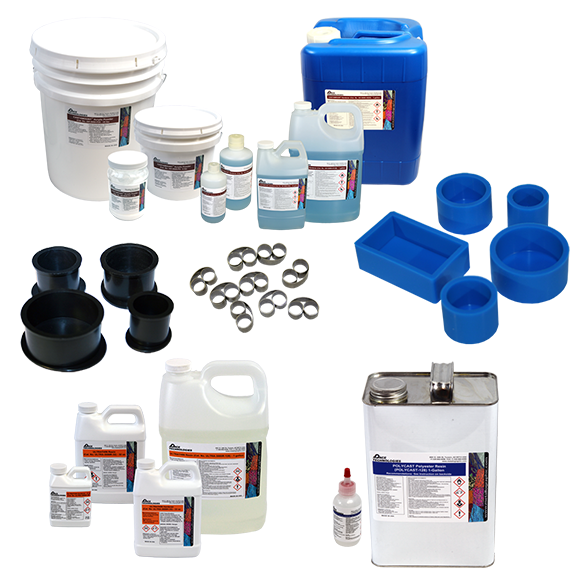
Castable resins are monomer resins which utilize a catalyst or hardener for polymerization. Polymerization results in cross-linking of the polymer to form a relatively hard mount. Castable resins also have the advantage of simultaneously mounting multiple samples at one time for increased throughput. A number of resin systems used for metallographic mounting and include:
-Epoxy resins
-Acrylic (castable) resins
-Polyester (clear) resins
| EPOXY | ACRYLIC | POLYESTER Resin | |
|---|---|---|---|
| Type | Epoxy resin and hardener | Acrylic resin and powder | Polyester resin and hardener |
| Peak Temperature | 100-375°F | 150°F | 100°F |
| Shore D Hardness | 82 | 80 | 76 |
| Cure Time | 30 minutes to 8 hours | 5-8 minutes | 6-8 hours |
| Comments | Moderate hardness, low shrinkage, transparent | Very fast cure, translucent, some shrinkage | Transparent, water clear |

Epoxy Resins
The most common and best performing castable resins are epoxy based (Figure 4-2). Epoxy resins are typically two-part systems consisting of a resin and a catalyst (hardener). Mixing ratio's vary from ten parts resin with one part hardener to five parts resin with one part by weight of hardener. The advantages of mounting with epoxy resins include:
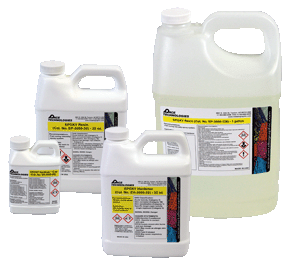
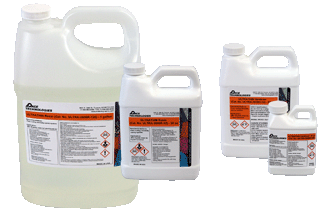
- Low shrinkage
- Relatively clear
- Relatively low exotherms
- Excellent adhesion
- Excellent chemical resistance
- Good hardness
- Relatively inexpensive
Epoxy curing times are dependent upon a number of variables including:
- Volume of mounting resin (larger mounts cure faster).
- Thermal mass of specimen (larger specimens absorb heat and therefore require longer curing time).
- Specimen material properties.
- Initial resin temperature (higher temperatures cure faster).
- Ambient temperature (higher temperatures cure faster).
- Relative humidity and shelf life (absorption of water degrades resin and shortens shelf life).
- Mounting mold (plastic, phenolic rings, rubber absorb heat differently).
As a general rule, curing times can vary from 30-45 minutes for fast curing epoxies up to 24 hours for slower curing epoxies. For metallographic epoxies to grind properly, the hardness needs to be at least a Shore D80. Note that epoxy resins typically will continue to harden over a longer period of time (maximum hardness, Shore D90).
In some cases, the curing time and temperature may need to be controlled to compensate for the above variables. For example, an 8-hour resin system can be cured in 30-45 minutes by preheating the resin to approximately 120°F (50°C) prior to mixing and then curing at room temperature. This procedure initiates the catalytic reaction sooner; however, this may also increase the maximum exotherm temperature.
TIP: Preheat the specimen to initiate the epoxy resin at the surface of the mount and thus have the epoxy shrink towards the sample for better edge retention.Conversely, the resin curing cycle can be slowed or reduced by decreasing the curing temperature by forcing air over the curing mounts (fume hood or fan), placing the mounts into a water bath, or curing in a refrigerator. In these cases, care must be taken to not stop the reaction; however if this does occur or the resin is too soft after curing, heating it to 100-120°F for several hours should push the reaction to completion and the mount should be hard after cooling to room temperature.
| Epoxy | Standard Epoxy | Quick Mounting Epoxy | Low Viscosity Epoxy |
|---|---|---|---|
| Characteristic | Lower cost | Fast cure | Lower viscosity, clearer, lower exotherm, low shrinkage |
| Cure Time | 1-5 hours | 30 minutes | 2 hours |
| Mixing ratio (weight) (resin : hardener) |
5:1 | 10:1 | 10:1 |
| Peak Exotherm -20 grams -30 grams |
300°F 350°F |
350°F 375°F |
120°F 150°F |
| Color | Clear to slight |
Slight yellow tint | Clear |
| Viscosity | Medium | Medium | Low |
| Shrinkage | Moderate | High | Low |

Acrylics (Castable)
- Castable acrylics are easy to use and are very robust. The main advantage of mounting with castable acrylics is the fast curing time. Depending upon the mixing ratio, castable acrylic mounts are typically ready to use within 8-15 minutes. Also unlike epoxy resins, the ratio of the various acrylic parts (powder to liquid) can be altered by up to 25% with no adverse effect to the final properties of the mount. This is because both the liquid and powder are acrylics with various additives and curing agents. By varying the ratio of the liquid to powder, the curing time and viscosity can be altered.
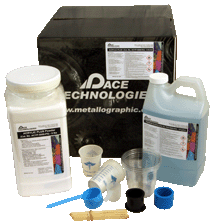
Note: The powder contains a catalyst that reacts with the liquid hardener to start the curing process. Fillers are added to increase hardness and to reduce shrinkage.
Characteristics of Acrylics
- Rapid mounting
- Very repeatable and consistent
- Moderate shrinkage
- Good hardness
- Semi-transparent
- High odor
| Acrylic | CASTAMOUNT | PREMIUM | SUPERMOUNT |
|---|---|---|---|
| Characteristic | Fast, clear, low shrinkage | Fast, clear, low shrinkage | Fast, hard |
| Cure time | 10 minutes | 8 minutes | 10 minutes |
| Mixing ratio (volume) Powder : Liquid |
3:2 or 2:1 for lower viscosity | 3:2 | 3:2 |
| Color | Semi-clear | Semi-clear | Gray to black |

Polyesters
Polyesters are typically used when a very clear mount is required. Polyester resins are also useful for mounting parts for display. In this case, the part appears suspended in the plastic. The procedure for molding samples for display is to first determine the mixing ratio of the resin to hardener (catalyst). This ratio is variable depending upon the mass of the casting.
| Single Layer Casting (metallographic) | CASTAMOUNT | ||
|---|---|---|---|
| Layer Thickness | Drops of catalyst per ounce of resin | Layer | Drops fo catalyst per ounce of resin |
| 1/8" | 15 | 1st layer | 5 |
| 1/4" | 5 | 2 nd layer | 4 |
| 1/2" | 6 | 3rd layer | 3 |
| 3/4" | 5 | 4th layer | 2 |
| 1" - 1-1/2" | 4 | 5th layer or more | 2 |
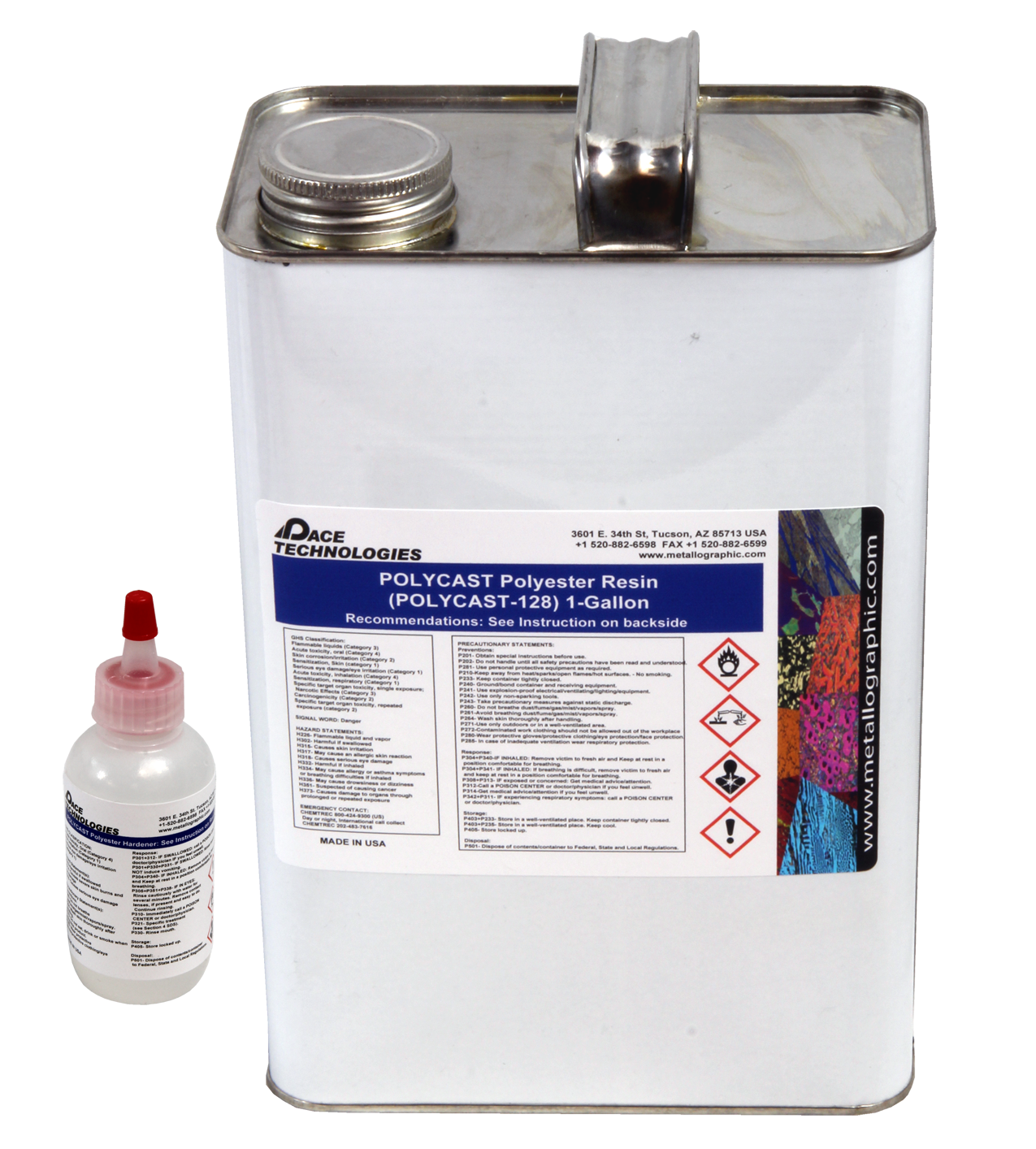
For larger volumes, the amount of hardener needs to be reduced significantly. The procedure for suspending the sample in the mount is to pour an initial layer and allow it to pot or gel (do not let it fully cure). The object or specimen is then placed on the initial rubbery polyester layer and another layer of the liquid polyester is poured. Multiple layers can be poured in this fashion if required.
Characteristics of Polyester
- Very clear (water clear)
- High odor
- Best resin system for large castings

Castable Mounting Procedures
- Clean and thoroughly dry specimens to remove cutting and handling residues.
- Remove debris from molding cups.
- Apply thin coat of mold release compound to molding cup.
- Center specimen in molding cup.
- Accurately measure resin and hardener.
- Mix thoroughly (gentle mixing to avoid producing excessive air bubbles).
- To reduce air bubbles, pull a vacuum on the specimen before pouring the
resin. After pouring the resin over the specimen, cure at room pressure or
apply pressure in an autoclave chamber.
Note: This will also increase maximum exotherm temperature.
Vacuum/Pressure Mounting
Vacuum impregnation is a very useful technique used to fill in pores or voids prior to specimen preparation. It is highly useful for thermal spray coatings and other porous samples.
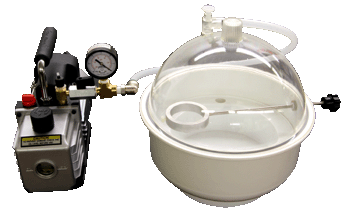
The most effective technique is to pour the resin under vacuum and/or apply pressure during the curing cycle (advantages - better infiltration of pores and cracks, more transparent mounts, and fewer air bubbles).
For porous or cracked specimens, the resin can aid in supporting these features. Filling these voids can be difficult depending upon their size, with the smaller voids being much more difficult to impregnate than larger voids. This arises mainly because of the compressibility and volume of air within the void. By applying a vacuum to the specimen and pouring while under vacuum the total pressure of this air can be reduced significantly. Subsequent curing at increased pressures will force (or push) the resin into the voids. Note that the vacuum time on both the resin and specimen should be kept to a minimum in order to minimize degassing of the resin.
PV = nRT (gas law)P - Pressure
V - Volume
T - Temperature
V(bubble size) = nRT/P
Thus in order to decrease the air bubble size, impregnate at low pressures and cure at higher pressures.
Recommended Procedure:
- Place mold and sample into impregnation chamber
- Mix castable mounting resin
- Place cover on chamber and pull vacuum
- Pour resin into mount
- Slowly increase the pressure
- Allow the mount to cure at room pressure or apply an external pressure.
TIP: Do not pull vacuum for more than 60 seconds. Extended vacuum causes the dissolved gases in the liquid resin to degass and bubble (similar to opening up a carbonated beverage bottle).
TIP: To reduce the curing time, preheat resin, hardener and specimen to 30°C (85°F). Note: this will also increase maximum exotherm.
TIP: Slight preheating of the epoxy will also reduce the viscosity of the resin and allow it to flow better.

Trouble Shooting (Castable Resins)
| Symptom | Cause | Action |
|---|---|---|
| Lack of or partial curing of resin | Improper or insufficient mixing |
-Remount – taking care to sufficiently mix epoxy resin and catalyst -Check expiration date on catalyst (typically 1-year) |
|
Soft or gummy resins (Grinding produces a matted finish) |
Insufficient curing of resin – primarily by too low an exotherm |
Heat mount in an oven at 90-100°F (30-40°C) for 1-2 hours and let cool. Resin should harden upon cooling |
Bubbling, cracking, or yellowing of resin |
Too hot a curing exotherm |
-Mount at room temperatures below 85°F (30°C) -Decrease volume or volume percentage of hardener |
| Too long a curing time | Improper resin mixture, old hardener, or too cold a mounting temperature |
-Replace old hardener -Mount at room temperatures 70-80°F (30°C) -Preheat resin but cure at room temperature |
| Bubbles in resin | Improper mixing or degassing of specimen |
-Mix with a slow folding motion -Pour resin under vacuum and/or cure under higher pressures -Clean specimen prior to mounting |

Castable Resin Consumables
CASTAMOUNT Acrylic (Castable)

ACRYLIC PLUS (Castable)

SUPERMOUNT Acrylic kits (with filler)

EPOXY Resins Consumables
EPOXY Resins

QUICKMOUNT 2 Fast EPOXY Resin

ULTRATHIN 2 Low Viscosity EPOXY Resin

EPOXY-ELITE (Enviromentally friendly) EPOXY Resin

POLYESTER Resins Consumables
POLYCAST Clear Polyester Resin
| Description | Quantity | Catalog Number | Product Image |
|---|---|---|---|
| Polyester Resin | 1 gallon (3.8 l) | POLYCAST-128 | 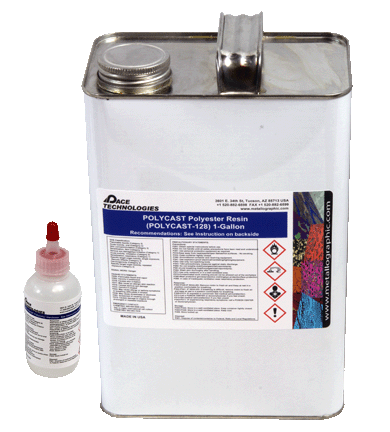 |
| Polyester Hardener | 2 oz | POLYHARD-02 | |
| Polyester dye kit | 3 colors/pkg | DYE-1000 |

MISCELLANEOUS Mounting Supplies
Castable Mounting Molds

Miscellaneous Mounting Accessories

